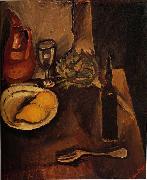Wholesale Oil Painting No Minimum |
|||||||||||
|
|
|||||||||||

|
|||||||||||
|
|
|
||||||||
Chaim SoutineChaim Soutine Art Locations Lithuanian 1893-1943 Soutine was born in Smilavichy near Minsk, Belarus (then part of the Russian Empire). He was the tenth of eleven children. From 1910?C1913 he studied in Vilnius at the Vilna Academy of Fine Arts. In 1913, with his friends Pinchus Kremegne and Michel Kikoine, he emigrated to Paris, where he studied at the Ecole des Beaux-Arts under Fernand Cormon. He soon developed a highly personal vision and painting technique. For a time, he and his friends lived at La Ruche, a residence for struggling artists in Montparnasse, where he became friends with Amedeo Modigliani. Modigliani painted Soutine's portrait several times, most famously in 1917, on a door of an apartment belonging to Leopold Zborowski, who was their art dealer. Zoborowski supported Soutine through the World War I, taking the struggling artist with him to Nice to escape the German bombing of Paris. In 1923, the American collector Albert C. Barnes visited his studio and immediately bought sixty of Soutine's paintings. Soutine once horrified his neighbours by keeping an animal carcass in his studio so that he could paint it (Carcass of Beef). The stench drove them to send for the police, whom Soutine promptly lectured on the relative importance of art over hygiene. In February 2006 this painting sold for £7.8 million to an anonymous buyer in London. Soutine produced the majority of his works from 1920 to 1929. He seldom showed his works, but he did take part in the exhibition of Independent Art held in 1937 in Paris, where he was at last hailed as a great painter. Soon thereafter France was invaded by German troops. As a Jew, Soutine had to escape from the French capital and hide in order to avoid arrest by the Gestapo. He moved from one place to another and was sometimes forced to seek shelter in forests, sleeping outdoors. Suffering from a stomach ulcer and bleeding badly, he left a safe hiding place for Paris in order to undergo emergency surgery, which failed to save his life. On August 9, 1943, Chaim Soutine died of a perforated ulcer. Soutine was interred in Cimeti??re du Montparnasse, Paris. |
||||||||
|
|
||||||||
Still Life with Lemons
Still Life with Lemons Painting ID:: 3759 |
1916
63 x 54cm
Private Collection, New York
1916 63 x 54cm Private Collection, New York |
|||||||
|
|
||||||||
|
Nicolae Grigorescu Romanian Painter, 1838-1907 From 1848 he trained in Bucharest with various church painters, producing icons and religious mural decorations. These works, which soon attracted attention, were influenced in style by the Viennese classicism widespread in the Romanian principalities in the early 19th century and by the Italian academicism established there after 1850 by Gheorghe Tattarescu. The earliest of his known paintings are in the church of SS Constantin and Elena at Baicoi, where his signature can be seen beside that of Nita Pereescu on the icon of St George (1853). He subsequently painted a series of icons (1854-5) at Caldarusani Monastery. In the later ensembles he was assisted by his older brother Georghe Grigorescu, who participated under his direction in the decoration of churches, such as those of the Zamfira (1856-8) and Agapia (1858-60) monasteries. In Nicolae's paintings at Agapia, classicism in Romanian art reached its highest point. The royal icons are distinguished for the elegance of the figures, both in their attitudes and in their drapery. Still Life with Lemons nn06 Oil on cardboard 22x28.5cm Art Museum,Constanta |
||||||||
|
|
||||||||
|
Prev Next
|
||||||||
|
|
||||||||
|
Related Paintings to Nicolae Grigorescu :. |
||||||||
|
|
||||||||
|
CONTACT US |

